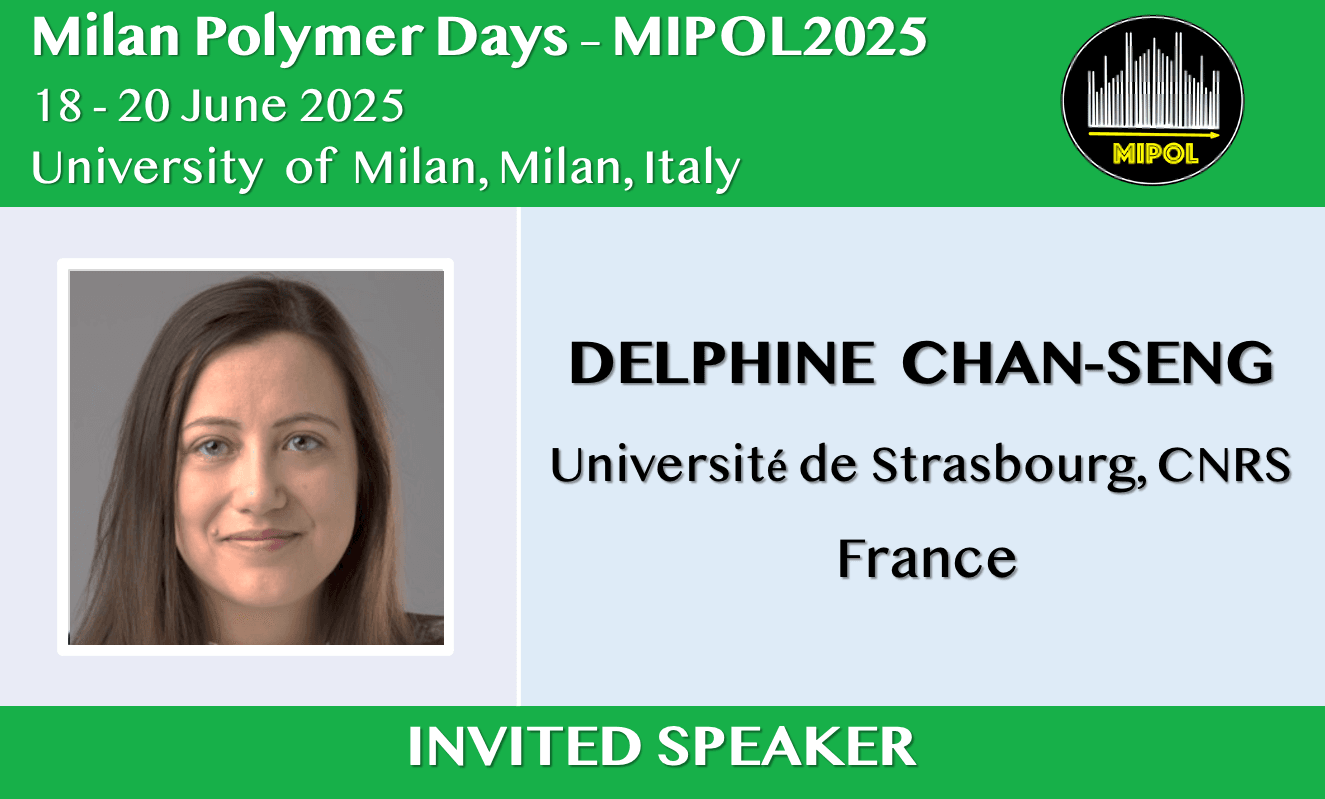Macromolecular engineering to tune materials for biomedical applications
Abstract

Advances in the field of polymer chemistry have permitted to prepare polymers of controlled topologies, functionalities and microstructures using various strategies to access complex architectures with a variety of functional groups positioned at well-defined localizations on the polymer chain [1]. This ability to control the architecture and microstructure of polymers along with their functionalities are an asset to adjust the properties of polymers and tune their performances according to the targeted application [2,3]. This presentation will illustrate the ability of macromolecular engineering, especially the topology of polymers, to afford polymers of specific and tunable properties with a focus on biomedical applications through two examples as depicted on Fig. 1. The first part of the presentation will focus the design of comb polymers with peptide sequences as pendent grafts through the macromonomer approach. It will be illustrated through the use of macromonomers with oligoarginine pendent grafts [4]. This polymer exhibited a thermoresponsive behavior in water with a solubilization of the polymer upon increasing the temperature (upper critical solution temperature behavior). In a second part, the preparation of hybrid materials based on upconversion nanoparticles (UCNPs) and polymers will be discussed emphasizing on how the structure of the polymer covalently attached to UCNPs could be designed to fulfil the requirement of theranostics [5,6].

References
-
K. Matyjaszewski Prog. Polym. Sci. 2005, 30, 858.
-
C. Zhu, C. Ninh, C.J. Bettinger Biomacromolecules 2014, 15, 3474.
-
N. Gangloff, J. Ulbricht, T. Lorson, H. Schlaad, R. Luxenhofer Chem. Rev. 2016, 116, 1753.
-
N. Zydziak, M.H. Iqbal, A. Chaumont, A. Combes, E. Wasielewski, M. Legros, L. Jierry, P. Lavalle, F. Boulmedais, D. Chan-Seng Eur. Polym. J. 2020, 125, 109528.
-
A. Kavand, C. Blanck, F. Przybilla, Y. Mély, N. Anton, T. Vandamme, C.A. Serra, D. Chan-Seng Polym. Chem. 2020, 11, 4313.
-
A. Kavand, N. Anton, T. Vandamme, C.A. Serra, D. Chan-Seng Eur. Polym. J. 2020, 137, 109935.
Acknowledgments
The authors acknowledge financial support from the Frontier Research in Chemistry Foundation, the région Grand Est, the French National Research Agency, the University of Strasbourg, and the European Regional Development Fund (ERDF) in the framework of the INTERREG V Upper Rhine program “Transcending borders with every project” and by the Swiss Confederation and Swiss cantons of Aargau, Basel-Landschaft and Basel-Stadt.